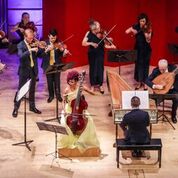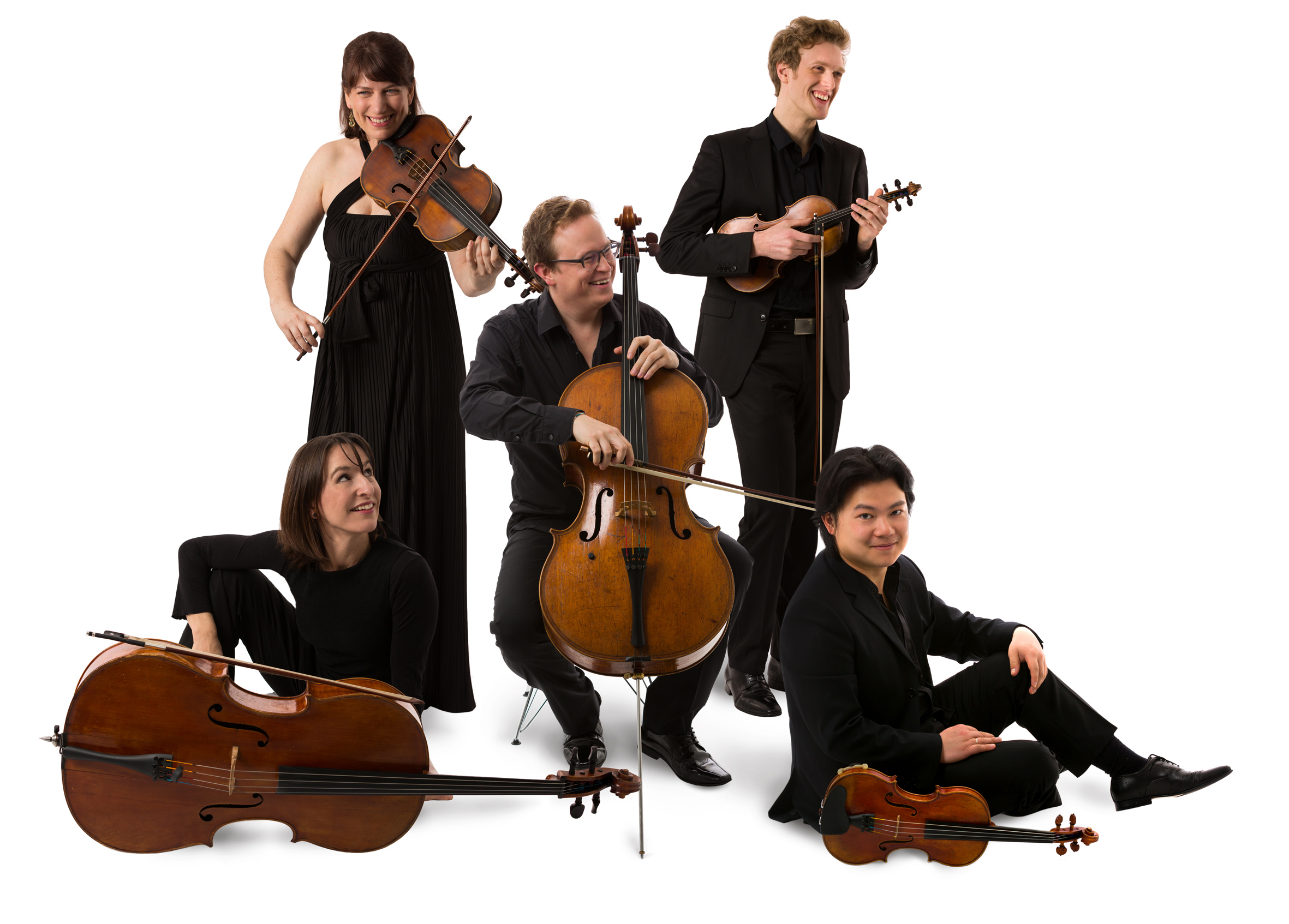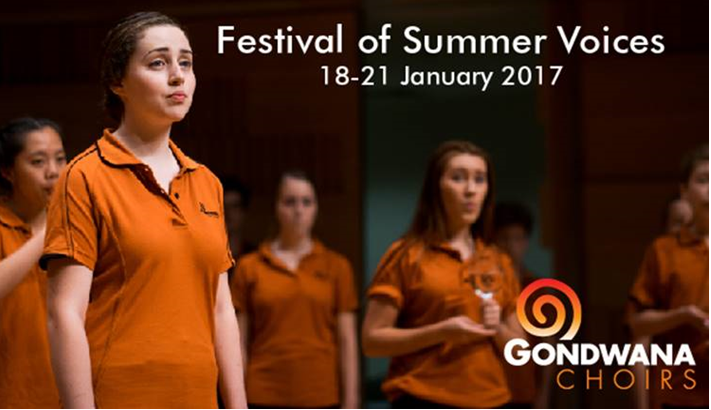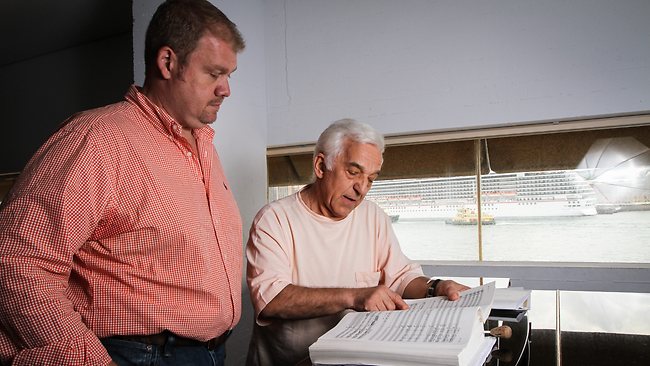CD Review: Brandenburg celebrates/Australian Brandenburg Orchestra

Commemorating twenty-five years of performance since its inception in January 1990, the Australian Brandenburg Orchestra has released Brandenburg Celebrates a new studio recording of Baroque exemplars which showcases the talents of the ensemble as well as the more challenging task of snapping a cross-section of its repertoire over this time.
Artistic Director and Co-Founder Paul Dyer AO, has compiled the music of five European Baroque composers and one contemporary Australian composer. Performing the music on period instruments, are the orchestra, regular orchestral soloists Shaun Lee-Chen (violin), Jamie Hey (cello) and Melissa Farrow (flute), along with the Brandenburg Choir.
It’s an explosive start with a triumphant rendition of Handel’s first Coronation Anthem, Zadok the Priest, HWV 258. The choir’s powerful chords contrast with feather light coloratura passages re-creating the stately though exultant mood of the piece.
Telemann’s Concerto in E minor for flute, violin and strings TWV2:e3 contains exceptional playing by Melissa Farrow and Shaun Lee-Chen. The second movement is a gentle dialogue between flute and violin, discreetly anchored by the ensemble playing pizzicato. There is a dazzling display from Lee-Chen in the brief, meteoric third movement before settling into the fourth movement – an ornamented Adagio which moves chromatically downwards in some chic harmonies closing with a dance-like Allegro.
There is a change of mood and timbre as Jamie Hey assumes the solo spot for Vivaldi’s Cello Concerto in A minor RV 421. Talking to SoundsLikeSydney on another occasion, Dyer has estimated that his ensemble has performed around a third of Vivaldi’s orchestral works so this is an apt inclusion. Hey’s incisive rendition of the first movement (Allegro non troppo) gives way to a sensitive and lyrical Largo, topped with a spirited Allegro within which he delivers a more introspective cadenza.
On to a duo of orchestral works. The first, by Geminiani is his Concerto Gross No 12 in D minor ‘La Folia‘. Written in Theme and Variations form, it is an excellent piece for displaying the many technical, expressive and ensemble skills of the orchestra. The second, by Handel (in D major Op3 No 6 HWV 317) is an opportunity to hear the period wind instruments played in style, improvisation and solo harpsichord playing by Dyer himself in the third movement.
The Violin Concerto in E minor Opus 1 No 4 by Italian Baroque composer and violinist Giuseppe Antonio Brescianello opens with a bustling Allegro, delicately phrased by soloist Lee-Chen alongside the joyful jangling of Dyer’s harpsichord continuo. The Adagio is a Vivaldi-esque ornamented soliloquy for the violin, followed by a virtuosic Allegro with a charming cadenza that ends with a flourish. Dyer has selected another work by Brescianello, Chaconne in A major to follow this concerto.
Fast forward to the 21st century and the CD closes with the Prelude and Cube by Elena Kats-Chernin, commissioned for the ensemble’s anniversary year. For this, the orchestra is joined again by the Brandenburg Choir and by soprano Jane Sheldon with Christina Leonard on soprano saxophone. It was premiered by the ensemble at a concert in Sydney, in February 2014. Written for soprano, saxophone, choir and orchestra, it celebrates the Baroque – old and new. I observed at the time that it was “a breathtaking work….. Minimalist bass lines were overlaid with rich columns of chords, rhapsodic melodies and syncopated rhythms. The saxophone and voice soared over the landscape…. the text based on a Lutheran hymn and the German version of the Magnificat. The Prelude conveyed gravitas and sense of triumph; the Cube looked to the future with a sense of fun and anticipation of continuing vibrant life.” I also observed that it was well worth hearing again. I have long lamented the lack of opportunity for premiered works to be recorded or to receive subsequent performances in public. Fortunately, Kats-Chernin’s piece has been committed to disc and can reach the wider audience it richly deserves. Sheldon’s voice shimmers and the silken sound of the saxophone is a welcome addition to the soundscape. The ensemble delivers an inspired performance of this hallmark work.
The booklet which accompanies the CD contains artist biographies, programme notes, and, like the ‘Brandenburg’s’ concert programmes, pointers about what to listen for in the music. There are also images and the text to Prelude and Cube. The CD was recorded in March 2015 in the Eugene Goossens Hall at the ABC Studios in Ultimo, Sydney.
As a testament to the work of the Australian Brandenburg Orchestra, this CD is well worth having. Arguably, the music of JS Bach is conspicuous by its absence, and music from the early classical repertoire which is also an integral part of the ensemble’s repertoire would have added interest. Understandably, the programme had to be selective but the recording has the advantage of containing the world premiere recording of – and indeed, the only way to hear Kats-Chernin’s remarkable Prelude and Cube.
Shamistha de Soysa for SoundsLikeSydney©
Click here to read our interview with Elena Kats-Chernin as she talks about composing Prelude and Cube.







